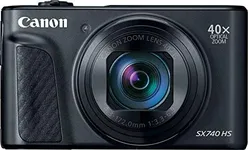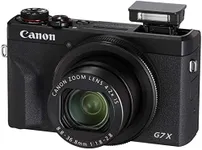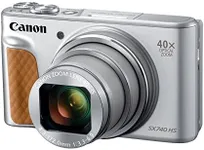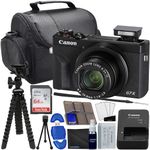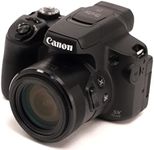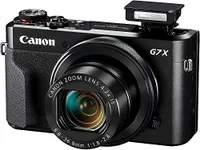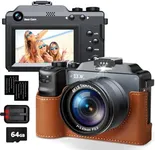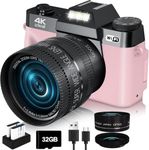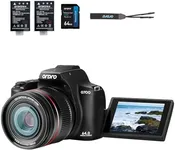Buying Guide for the Best Powershot Cameras
When choosing a PowerShot camera, it's important to consider what you'll be using it for. Whether you're a beginner looking to capture family moments, an enthusiast wanting to explore photography, or a professional needing a compact backup, understanding the key specifications will help you make the best choice. Here are the main specs to consider and how to navigate them to find the right camera for your needs.Sensor SizeThe sensor size determines the quality of the images your camera can produce. Larger sensors capture more light and detail, which is crucial for high-quality photos, especially in low-light conditions. Common sensor sizes in PowerShot cameras include 1/2.3-inch, 1-inch, and APS-C. If you're a casual user, a 1/2.3-inch sensor might suffice. For better image quality and more control over depth of field, a 1-inch sensor is a good middle ground. Professionals or serious enthusiasts might prefer an APS-C sensor for the best image quality.
MegapixelsMegapixels refer to the resolution of the camera's sensor, indicating how many millions of pixels the camera can capture. Higher megapixels mean more detail, which is important if you plan to print large photos or crop images without losing quality. For everyday use, 12-16 megapixels are usually sufficient. If you need more detail for professional work or large prints, look for cameras with 20 megapixels or more.
Zoom RangeThe zoom range of a camera determines how close you can get to your subject without moving. Optical zoom is more important than digital zoom, as it maintains image quality. PowerShot cameras often have zoom ranges from 3x to 50x or more. For general photography, a 3x to 10x zoom is usually enough. If you enjoy wildlife or sports photography, a higher zoom range like 20x to 50x will be beneficial.
Image StabilizationImage stabilization helps reduce blur caused by camera shake, which is especially useful in low light or when using a long zoom. There are two types: optical and digital. Optical stabilization is generally better as it physically adjusts the lens to counteract movement. If you often shoot in challenging conditions or without a tripod, look for a camera with good optical image stabilization.
Video CapabilitiesIf you plan to shoot videos, consider the camera's video capabilities. Look at the resolution (Full HD, 4K) and frame rates (30fps, 60fps). Full HD (1080p) is sufficient for most users, but if you want higher quality or plan to do professional video work, 4K is the way to go. Also, check for additional features like slow-motion recording and external microphone support if audio quality is important to you.
ConnectivityModern cameras often come with various connectivity options like Wi-Fi, Bluetooth, and NFC. These features allow you to easily transfer photos to your smartphone or computer, and even control the camera remotely. If you like to share your photos quickly on social media or need to transfer files without hassle, look for a camera with robust connectivity options.
Battery LifeBattery life is crucial, especially if you plan to use the camera for extended periods or while traveling. Battery life is usually measured in the number of shots per charge. For casual use, a camera with 200-300 shots per charge might be enough. If you plan to shoot extensively, look for models that offer 400 shots or more per charge, or consider carrying extra batteries.
Size and WeightThe size and weight of the camera can affect how often you use it. Compact and lightweight models are easier to carry around and are ideal for travel or everyday use. Larger and heavier models might offer more features and better ergonomics but can be cumbersome to carry. Consider how portable you need your camera to be and choose accordingly.
